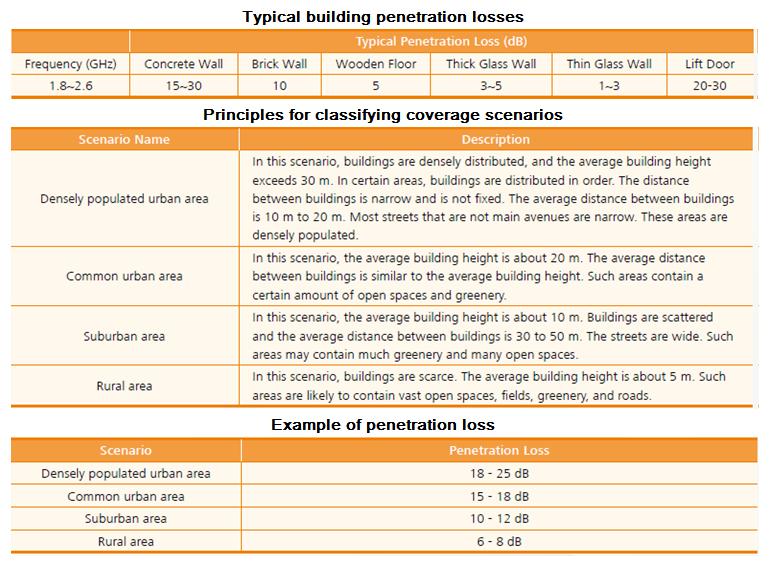Penetration loss in LTE indicates the fading of radio signals from an indoor terminal to a base station due to obstruction by a building. For an indoor receiver to maintain normal communications, the signal must be sufficiently strong. The indoor receiver obtains radio signals in the following scenarios for Penetration loss:
- The indoor receiver obtains signals from an outdoor transmitter.
- The transmitter and receiver are located in a same building. See Figure below
The link budget is only concerned with the scenario in which an outdoor transmitter is used and the signals penetrate only one wall.
The propagation modes of electromagnetic waves are as follows: direct radiation, inverse radiation, diffraction, penetration, and scattering in Penetration loss.
In areas where no indoor distributed system is deployed, electromagnetic wave signals are obtained through diffraction and scattering. Therefore, the indoor Penetration loss in LTE is related to the incident angle, building materials, terrain, and working frequency. Table below lists the penetration losses associated with typical buildings for Penetration loss.
Typical building penetration losses
In the link budget, Penetration loss in LTE values depend on the coverage scenario. Therefore, coverage target areas are classified into densely populated urban areas, common urban areas, suburban areas, rural areas, and highways. Table below lists the area classification principles.
Principles for classifying coverage scenarios
The building Penetration loss in LTE ranges from 5 dB to 40 dB. In link budget, if no actual test data in the target area is available, an assumed Penetration loss in LTE value must be used. The final assumption is also highly dependent on local customer requirement.
For example of Penetration loss in sophisticated Asian Metropolis like Hong Kong, Singapore and Shanghai, the indoor coverage expectation will be very high, hence requiring a high Penetration loss in LTE provisioning. On the other hand, in less developed market such as Africa and Latin America, customer expectation is lower so the Penetration loss in LTE requirement can be reduced to reduce overall cost involved.
During network planning, if no actual field testing data is available, refer to the Penetration loss in LTE values listed in Table below.
